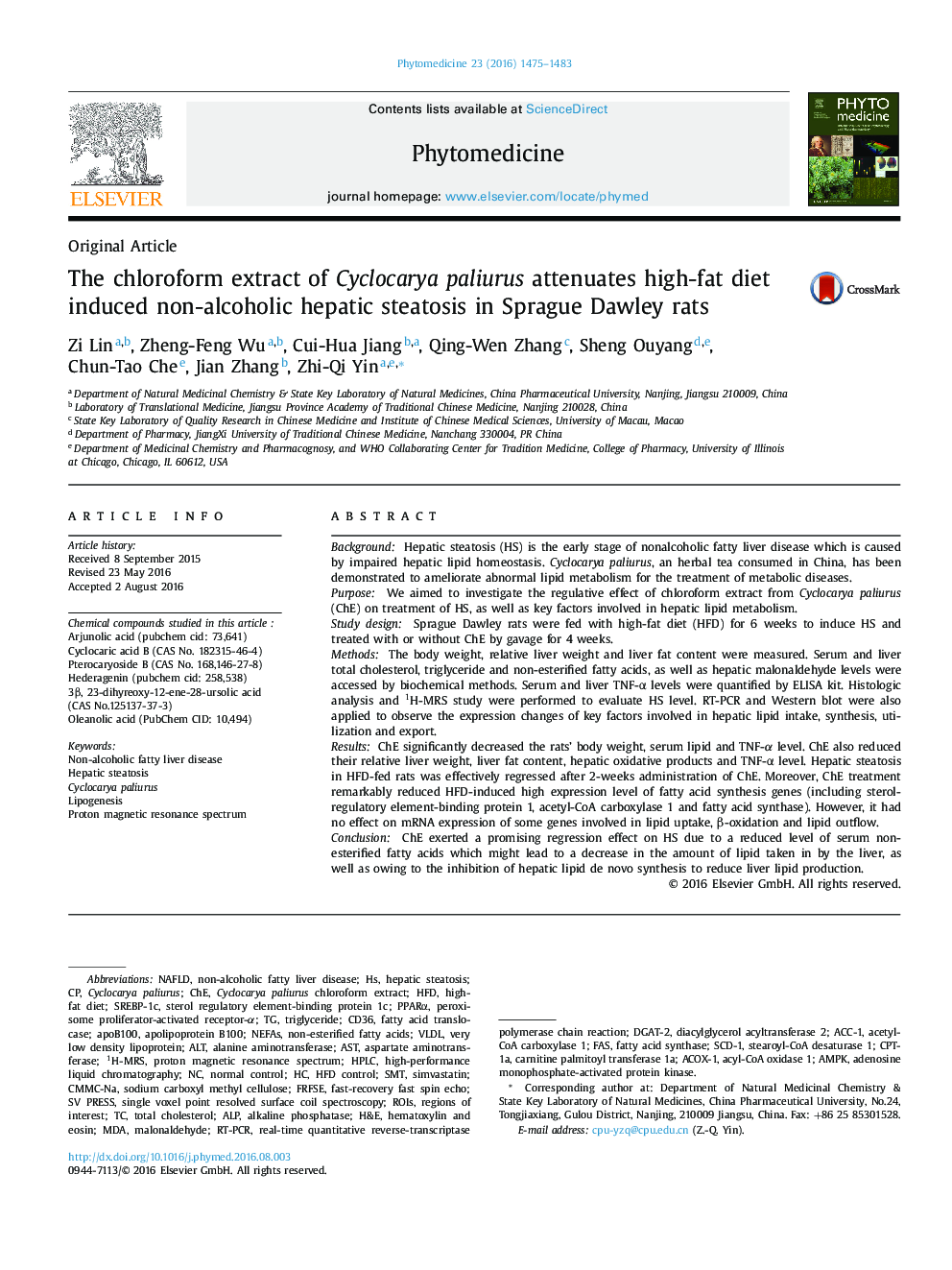| Article ID | Journal | Published Year | Pages | File Type |
|---|---|---|---|---|
| 5549369 | Phytomedicine | 2016 | 9 Pages |
BackgroundHepatic steatosis (HS) is the early stage of nonalcoholic fatty liver disease which is caused by impaired hepatic lipid homeostasis. Cyclocarya paliurus, an herbal tea consumed in China, has been demonstrated to ameliorate abnormal lipid metabolism for the treatment of metabolic diseases.PurposeWe aimed to investigate the regulative effect of chloroform extract from Cyclocarya paliurus (ChE) on treatment of HS, as well as key factors involved in hepatic lipid metabolism.Study designSprague Dawley rats were fed with high-fat diet (HFD) for 6 weeks to induce HS and treated with or without ChE by gavage for 4 weeks.MethodsThe body weight, relative liver weight and liver fat content were measured. Serum and liver total cholesterol, triglyceride and non-esterified fatty acids, as well as hepatic malonaldehyde levels were accessed by biochemical methods. Serum and liver TNF-α levels were quantified by ELISA kit. Histologic analysis and 1H-MRS study were performed to evaluate HS level. RT-PCR and Western blot were also applied to observe the expression changes of key factors involved in hepatic lipid intake, synthesis, utilization and export.ResultsChE significantly decreased the rats' body weight, serum lipid and TNF-α level. ChE also reduced their relative liver weight, liver fat content, hepatic oxidative products and TNF-α level. Hepatic steatosis in HFD-fed rats was effectively regressed after 2-weeks administration of ChE. Moreover, ChE treatment remarkably reduced HFD-induced high expression level of fatty acid synthesis genes (including sterol-regulatory element-binding protein 1, acetyl-CoA carboxylase 1 and fatty acid synthase). However, it had no effect on mRNA expression of some genes involved in lipid uptake, β-oxidation and lipid outflow.ConclusionChE exerted a promising regression effect on HS due to a reduced level of serum non-esterified fatty acids which might lead to a decrease in the amount of lipid taken in by the liver, as well as owing to the inhibition of hepatic lipid de novo synthesis to reduce liver lipid production.
Graphical abstractDownload high-res image (176KB)Download full-size image
